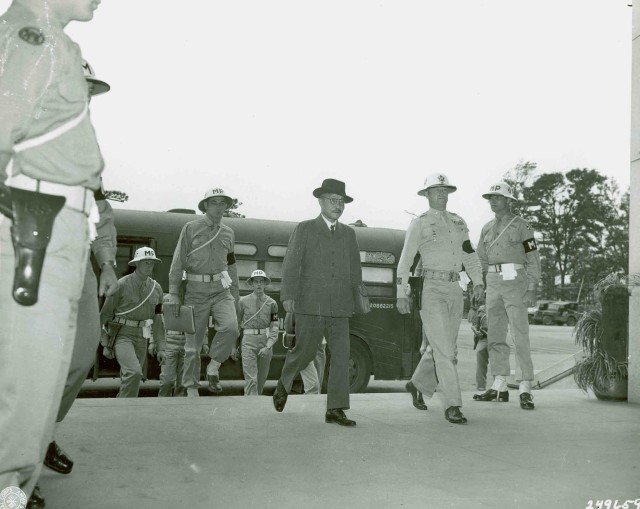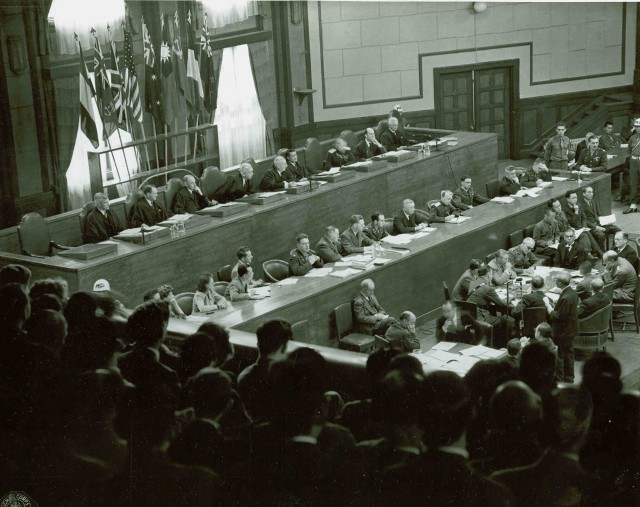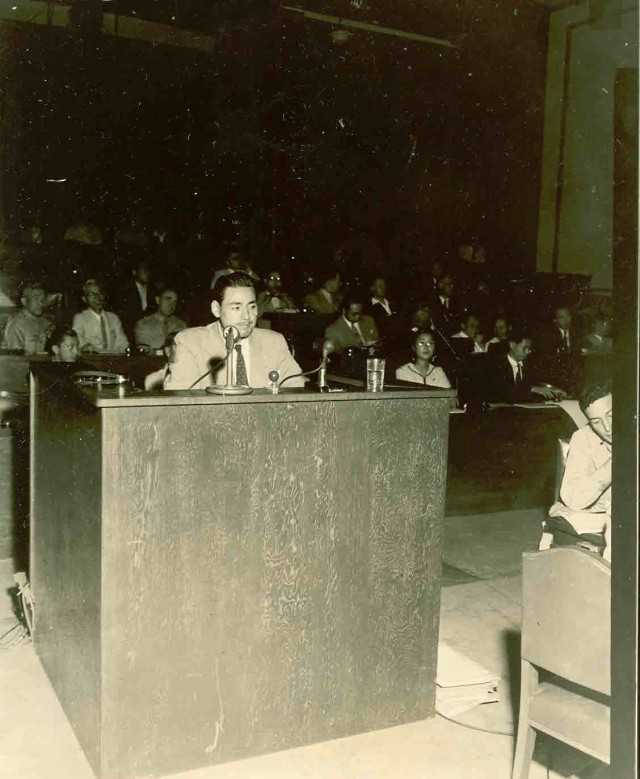One of the many actions taken by Allied Forces during their post-World War II occupation of Japan was to establish the International Military Tribunal for the Far East (IMTFE) to conduct what are commonly known as the Tokyo Trials. Supreme Allied Commander General Douglas MacArthur and his team worked initially to demilitarize the country, bring food to areas where the population was starving, and assist with the war crimes trials. Later, Allied occupation forces rebuilt civilian sectors, such as the transportation, industry, and the educational system. These activities eventually changed the country both politically and economically.
The tribunals stretched into two and a half years and had a great affect on the psyche of the Japanese people. The Tokyo Trials paralleled the Nuremberg Trials in Germany in many ways, but there were also many differences: The defendants at Nuremberg were more notorious to the public; different charges were brought against the accused, and the Tokyo Trials took longer to complete. The additional time it took to complete the trials caused them to fade from the international spotlight. The revelations from the military tribunals also helped to educate the Japanese people about the horrors of war perpetrated by their wartime government.
To conduct the hearings, the Allies first had to find the individuals that they believed responsible for war crimes, and obtain evidence against them. This was particularly difficult since many Japanese had destroyed or altered incriminating documents and other evidence before American and Allied forces landed on Japan. Eventually, to try the accused individuals, testimony from more than four hundred people and over four thousand items of evidence were used. Much of the evidence was gathered during the occupation. General MacArthur also made the controversial decision not to accuse Emperor Hirohito of any war crimes. This reflected overall American policy to leave the emperor on the throne in order to help reconcile the Japanese people to defeat, occupation, and democratization.
Eleven Allied countries each sent a judge to the proceedings, while the chief prosecutor was American Joseph Keenan. Assistant prosecutors from all of the other Allied nations also helped with the trials. Charges that were filed against the accused included conspiring to carry out wars of aggression; ordering, authorizing, or permitting conventional war crimes; not taking adequate measures to prevent war crimes, and committing crimes against humanity.
Twenty-eight Japanese officials were tried, and all were found guilty. The defendants held a variety of positions in the wartime Japanese government or military. The sentences varied depending upon the severity of the crimes. Seven men were sentenced to death by hanging; sixteen prisoners received life in prison; one individual received twenty years imprisonment, and one man was sentenced to seven years in prison. None of the accused was acquitted, though two died during the trial proceedings of natural causes, and one man was found mentally incompetent. The representatives of the Allied Council for Japan, with General MacArthur presiding, upheld IMTFE's verdicts on November 24, 1948. Through these proceedings, the United States and the international community held these convicted war criminals to account.
AGBPa,!a,!
ABOUT THIS STORY: Many of the sources presented in this article are among 400,000 books, 1.7 million photos and 12.5 million manuscripts available for study through the U.S. Army Military History Institute (MHI). The artifacts shown are among nearly 50,000 items of the Army Heritage Museum (AHM) collections. MHI and AHM are part of the U. S. Army Heritage and Education Center, 950 Soldiers Drive, Carlisle, PA, 17013-5021. Website: www.carlisle.army.mil/ahec










Social Sharing